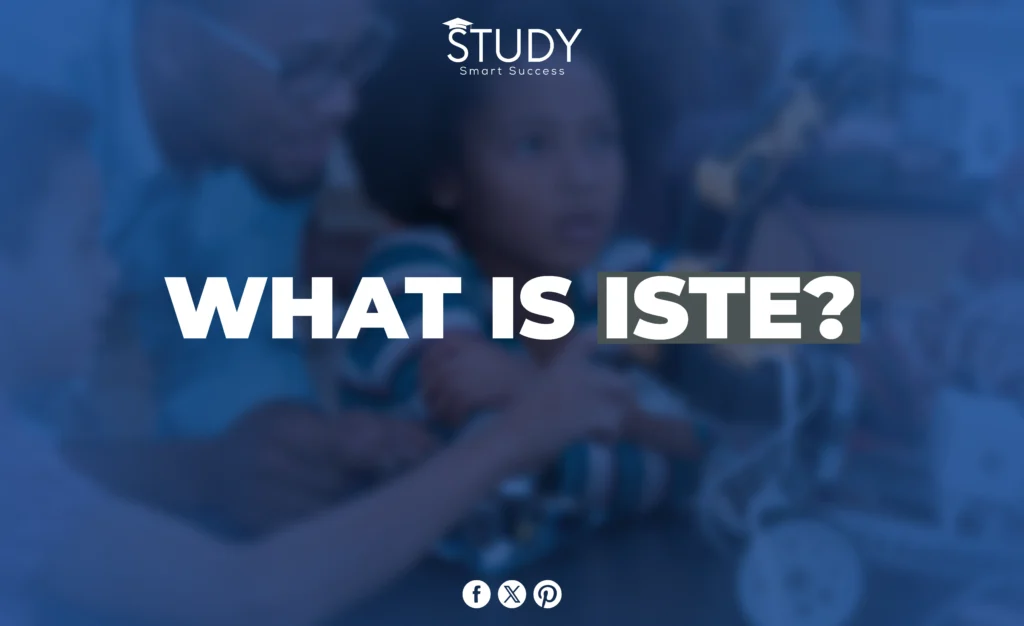In this day and age, when everything is digital, technology plays a crucial part in determining how our educational system will develop. The International Society for Technology in Education (ISTE) is one of the organizations working tirelessly to be at the forefront of this change. In this in-depth article, we’ll go into ISTE, Stants for, its aim, its impact on education, and how it serves educators and students.
Read out our blog on
History of ISTE
ISTE Conference
The ISTE Standards
How to join ISTE membership
Introduction
ISTE stands for “International Society for Technology in Education.” One of the most active professions to change due to rapid technology advancements is education. The International Society for Technology in Education launched this transformation. Our investigation of ISTE shows an organization that actively uses technology in education for teachers and students and recognizes its potential.
We’ll go on a journey to discover the core of ISTE (International Society for Technology in Education) in this piece, including its history, goals, and crucial role in influencing the nature of education in the digital era. What is ISTE, then, and why is it so important in technology and education? Let’s investigate.
The Genesis of ISTE
ISTE was founded in the early 1980s, a critical turning point. As personal computers appeared in classrooms, teachers began to understand how technology could improve their teaching. As the digital revolution accelerated, forward-thinking educators and technology founded ISTE.
Early adopters realized the need for a company to study education technology. ISTE has grown from a modest group to a global powerhouse influencing education technology thinking and use. Its growth from humble origins to Edtech leader reflects the industry’s commitment to education innovation.
ISTE’s Mission and Vision
The goal and vision of ISTE (International Society for Technology in Education) center on empowering educators and students via technology in the classroom. The organization is strongly dedicated to promoting and facilitating the productive incorporation of technology into the educational process.
Mission:
Promoting the use of technology in education to improve and alter learning experiences is the main goal of ISTE. It aims to provide teachers with the resources, information, and instruments to utilize technology in the classroom as effectively as possible. By doing this, ISTE hopes to assist students in becoming competent, ethical, and responsible technology users while preparing them for the challenges of the digital age.
Vision:
ISTE wants to make it easy for schools to use technology, which will create active classes that put learning first. It wants technology in schools to be very important. From this point of view, teachers are free to develop new ideas, kids are ready for digital learning, and technology improves education without taking away from individualization. ISTE wants to show how technology can help close educational gaps worldwide.
ISTE Standards
The International Society for Technology in Education (ISTE) created the ISTE Standards, a set of recommendations that specify what knowledge and skills teachers and students should possess when using technology in the classroom. These standards provide a roadmap for effectively integrating technology into teaching and learning. ISTE Standards are available in multiple sets, each addressing a distinct area of technology and education. Here’s an overview of the key ISTE standards:
ISTE for Educators
These guidelines were developed to provide educators with a framework for successfully using technology in their classroom operations. They cover many subjects, including learning facilitation, professional development, and teaching in the digital era. Instructors are told to use technology as a role model and teach kids how to be good digital citizens.
ISTE for Students
These guidelines mostly address expectations for what children should be able to accomplish with technology and how they should conduct themselves while using the internet. They include topics like the creative use of technology, critical thinking, and digital communication. Other components include responsible technology use. The objective here is to prepare children for life in a world increasingly dominated by technology.
ISTE for Administrators
Principals and superintendents, among other educational leaders, were carefully considered in developing these recommendations. They address subjects including digital citizenship, learning cultures suitable for the digital era, and visionary leadership. It is highly advised that administrators create an atmosphere that is favorable to the incorporation of technology.
ISTE Conferences and Events
Teachers, ed-tech experts, and thought leaders worldwide come together at ISTE workshops and other events. These events allow people to meet each other, share information, and look into new technologies for schooling. Many workshops, discussions, and presentations at ISTE conferences cover best practices, new tools, and integrating technology in the classroom. These events get teachers to work together and use technology to improve lessons.
ISTE’s Global Impact
ISTE leads education technology globally because it affects people everywhere. The company promotes smart technology use in learning with schools, colleges, and other groups globally. ISTE is crucial to bridging the achievement gap and providing high-quality technology education to all students. It allows global sharing of best practices, resources, and research. Its programs worldwide inspire creativity and cross-cultural collaboration. It improves communication and empowers the international education group technologically.
Challenges and Controversies
The International Society for Technology in Education (ISTE), responsible for significant improvements in educational technology, has also been embroiled in its fair share of challenges and disputes. This is even though the organization has been responsible for these advancements.
- One of its main issues is that people still need to decide whether technology can match the depth of old-fashioned instruction. According to many instructors and experts, technology overuse can impair pupils’ creativity, critical thinking, and social skills.
- People also disagree on fairness and availability. Many worry about the “digital divide,” which means certain pupils don’t have the same devices or internet access. ISTE is trying to solve this by encouraging everyone to use technology and offering tools.
- ISTE has been a leader in education technology, yet it still needs to work on reconciling innovation and traditional education.
ISTE Success Stories
ISTE, the International Society for Technology in Education, has a long tradition of being a catalyst for positive change in educational technology. This has resulted in many success stories that illustrate the significant achievements that ISTE has made. The following are some prominent examples of success:
Transformation of Classrooms:
Numerous classrooms have been motivated by ISTE’s standards and advocacy to accept technology as an essential component of the learning process. Teachers have changed how they teach, using digital textbooks and interactive whiteboards to create more dynamic and engaging courses.
Innovative Teaching Techniques:
ISTE has pushed teachers to think outside the box and develop new teaching methods. Online platforms, multimedia materials, and game-like techniques are being used by teachers, which is getting students more involved and helping them learn more.
Enhanced Accessibility:
ISTE has been one of the most influential organizations in the movement to make educational technology more accessible. This has resulted in creating tools and resources for students with impairments, ensuring that these kids have equal access to learning opportunities.
These success stories demonstrate ISTE’s impact on education technology. ISTE shapes how educators and students use technology by encouraging innovation, cooperation, and responsible use, improving learning.
Future Prospects
Good evidence suggests that the International Society for Technology in Education (ISTE) will last. ISTE will help teachers and students adapt to a constantly changing world as technology advances. It will continue to shape education due to its devotion to innovative ideas, professional development, and global collaboration.
Conclusion
In conclusion, the International Society for Technology in Education (ISTE) is responsible for developing new school technology. Since its start in the 1980s and now with members worldwide, ISTE has pushed teachers and students to accept the digital age. ISTE ensures that education stays current in a world that is always changing by setting standards, promoting teamwork, and supporting the responsible use of technology. ISTE will continue to shape education for hundreds of years because it is dedicated to new ideas and envisions a world where technology is used to help students learn.
FAQs
Q1: What is the primary goal of ISTE?
ISTE’s primary goal is to inspire and support the effective integration of technology in education, enhancing the learning experience.
Q2: How does ISTE benefit educators?
ISTE provides educators with resources, training, and a supportive community to excel in the digital classroom.
Q3: What are ISTE standards?
ISTE standards define what students and educators should know and be able to do with technology in education.
Q4: Does ISTE have a global impact?
Yes, ISTE collaborates with educators and organizations worldwide to promote technology in education.
Q5: What challenges does ISTE face?
ISTE faces challenges, such as the debate over technology replacing traditional teaching methods.


